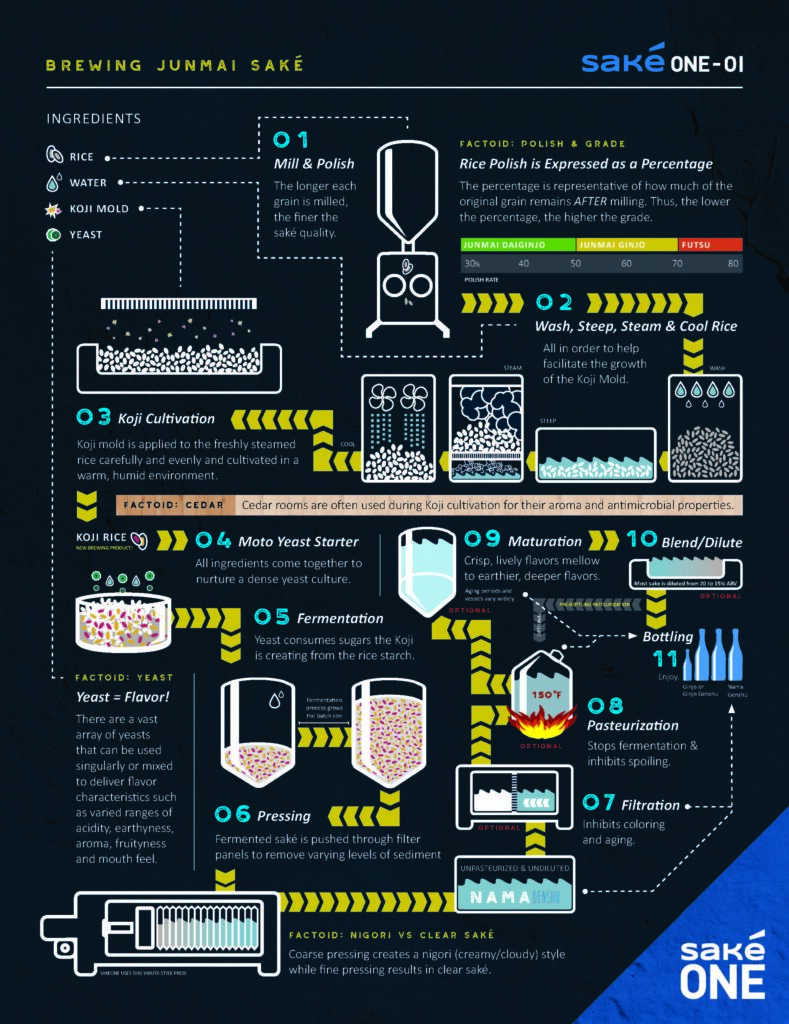
Since its establishment in 1992 in the picturesque state of Oregon, SakéOne has been at the forefront of the American craft saké movement. As the first craft saké brewery in the United States, we have dedicated ourselves to not only producing exceptional saké but also spreading the joy and appreciation of this beverage across the country. Join us as we take you on a captivating journey through the process of crafting saké, from rice to the glass.
In the Kura, rice is milled and polished down to 58% of its original size. This polish rate is optimal for brewing Junmai Ginjo saké. For our exclusive Daiginjo saké, Naginata, the rice is polished down even further to an impressive 40%. During the milling process, the outer layers of rice are stripped away to reveal the starch-rich core, an essential element for saké production. The degree of milling greatly influences the ultimate quality, aroma, and flavor of saké.
Once the rice has been polished, it is time to cleanse it thoroughly. This step involves washing away any remaining rice powder, ensuring that the grains are clean. Following the washing process, the rice is steamed to achieve the ideal moisture content. After steaming, the rice is cooled down, preparing it for the next stage in the journey.
Koji, a mold called aspergillus oryzae, plays a pivotal role in the saké brewing process. It is sprinkled over the cooled rice, acting as a catalyst to convert the rice’s starches into fermentable sugars. This process, known as saccharification, is essential for the production of alcohol during fermentation.
To kickstart fermentation, a portion of the koji rice is mixed with water, steamed rice, and yeast. This mixture, known as the moto, ferments to develop the base for the main fermentation process. The moto is carefully nurtured to ensure a healthy and robust yeast population.
Now, the main fermentation process begins. The moto is combined with the remaining steamed rice, water, and yeast. Then, this mixture undergoes fermentation in temperature-controlled tanks. This step is critical as it determines the saké’s flavor profile and aroma.

Once fermentation is complete, the saké mash is gently pressed to separate the liquid from the solid sediment. The fermented saké is then carefully filtered through special panels, leaving behind any remaining sediment. After pressing and filtration, the saké is crisp and clear.
To stabilize the saké and preserve its flavor, it undergoes pasteurization. This process involves heating the saké to a specific temperature to stop any remaining fermentation and kill off any bacteria. Pasteurization ensures the saké retains its flavor and quality throughout storage and transportation.
After pasteurization, the saké is left to mature. The maturation period can vary, and during this time, the flavors harmonize, creating a balanced and refined taste profile.
The art of blending is the final touch in crafting the perfect saké. Our brewers blend batches of saké to achieve the desired flavor profile, ensuring consistency and excellence in every bottle.
Lastly, the finished saké is carefully bottled, sealed, and labeled, ready to be shared and enjoyed by customers across the nation.
At SakéOne, we take immense pride in every step of the saké brewing process. Our dedication to producing top-quality saké is matched only by our desire to educate and spread the love for this beverage. We welcome you to embark on a brewery tour, where you can witness firsthand the craftsmanship that goes into creating our saké. Kanpai!
If you’re wondering what the differences between saké, shochu, and soju are, you’re not alone. From Japan to Korea, these traditional drinks have been around for centuries and have unique flavors and nuances that make them stand out. Though they may be similar in some ways, there are also some key differences that set them apart.
Saké, our specialty at SakéOne, is a traditional Japanese beverage brewed from fermenting rice. During the brewing process, only four ingredients are used to make saké: rice, water, yeast, and koji.
Saké’s alcohol by volume (ABV) hovers at about 15 or 16 percent, making it slightly stronger than beer or wine. The flavor profile of saké can range from sweet to umami-forward, depending on the style. A Nigori saké, such as Momokawa Pearl, has a sweeter taste than a Junmai style saké such as Hakutsuru Excellent. Due to the variety of flavors in this category, saké easily pairs with many cuisines. If you usually drink saké with sushi, try enjoying a glass with an American favorite or even your dessert.
While many people sip saké as is, it makes a fantastic liquor replacement in cocktails because of its lower alcohol by volume (ABV).
A common question about saké is “should I drink it hot or cold?”
Our recommendation is that premium saké is best enjoyed chilled because the cooler temperature brings out the subtle notes and aromas of the beverage. On the other hand, some umami forward sakés are often consumed warm.
When comparing saké and shochu, it’s important to note that they are both traditional Japanese alcoholic beverages. One key difference is that shochu is a distilled spirit made from grains. Because shochu is distilled, it has a higher alcohol by volume (ABV) than sake between 20 and 30 percent.
Shochu is often enjoyed neat but can also be served chilled on the rocks or with other mixers. Also, shochu pairs easily with many types of cuisines. But, the type of shochu you choose will be the determining factor in which foods to consume with the beverage.
Similarly, to shochu, soju is a distilled alcohol. It is made from grains, such as rice, wheat, and barley and the alcohol by volume (ABV) ranges from 16.7% to 45%.
Another difference between the three beverages is that rather than originating in Japan, soju is a traditional Korean alcoholic beverage.
Soju has a neutral flavor, but can also be slightly sweet or fruity depending on the variety. It is usually served chilled and is often sipped neat or in a cocktail. When deciding how to pair this beverage, it is recommended to pair it with foods that are heavier or oil-based. Soju’s clean finish aids in cleansing the palate when eating bolder flavors.
The next time you’re in the mood for a drink, remember to consider the differences between these three popular varieties to make sure you get exactly what you’re looking for.
Hakutsuru is one of the biggest sake brands in Japan, and is located in the Nada region in Kobe. The company was founded in 1743 by a lumber dealer, Jihei Kano. The word “Hakutsuru” translates to “white crane”, which was the inspiration for the sake brewery. Hakutsuru added the white crane as their official logo in 1979 and the symbol still marks their bottles today.
Hakutsuru’s history is full of impressive feats. The brewery played a role in modernizing sake packaging because Hakutsuru was the first company to sell sake in prepackaged glass bottles in 1878. Previously, sake was sold by weight and customers brought receptacles from home to be filled. The brewery gained attention when Hakutsuru bottles were presented at the World’s Fair in Paris in 1900. This event was just the start of building the brand’s global presence.
During the second world war, Hakutsuru and other sake breweries suffered because 90% of sake brew houses were destroyed in the war. However, Hakutsuru was able to recover and even build an earthquake resistant brewery building in 1952.
In the 21st century, Hakutsuru expanded production to become one of the most recognizable sake brands world-wide. In 2005, Hakutsuru Sake of America, Inc. was established in the United States to suit the needs of potential sake customers. Another notable achievement is the creation of their proprietary yeast and a new variety of rice named “Hakutsuru Nishiki” in 2007. In the last 8 years Hakutsuru continued to push the envelope and has incorporated solar panels atop their main brewery and bottling plant.
While Hakutsuru continues to optimize their efforts for future production, the company also pays tribute to its origins. Hakutsuru opened a “Sake Brewery Museum” in Kobe’s compact brewery district. The museum showcases their old sake Kura in its original form. Many sake enthusiasts visit the museum to get a feel for traditional brewing practices and explore the impressive art collection.
In recent news, members from Hakutsuru visited SakeOne’s home state of Oregon. Kenji Kano, president and CEO of Hakutsuru, gave a lecture about understanding and enjoying sake at Portland State University.
Hakutsuru offers a variety of sake styles perfect for all occasions! Explore some of our favorites below:
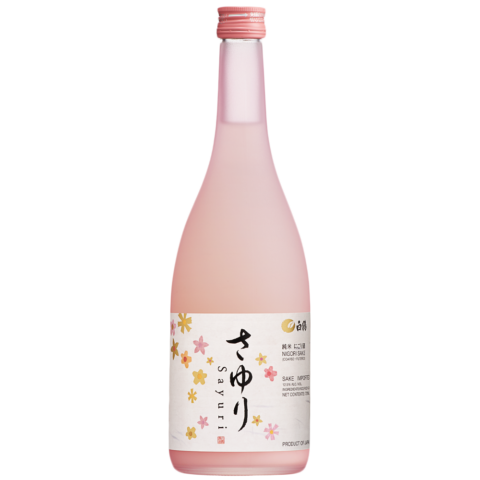
Nigori pick: Hakutsuru Sayuri Nigori
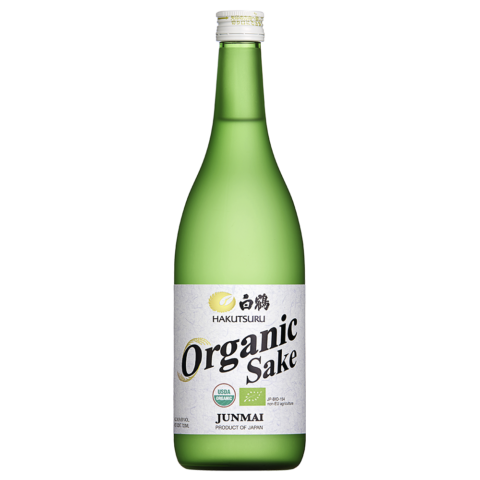
Organic pick: Hakutsuru Organic Junmai
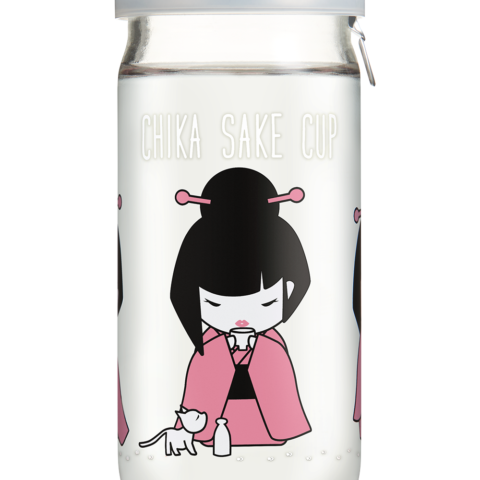
Travel-sized pick: Hakutsuru Chika Sake Cup
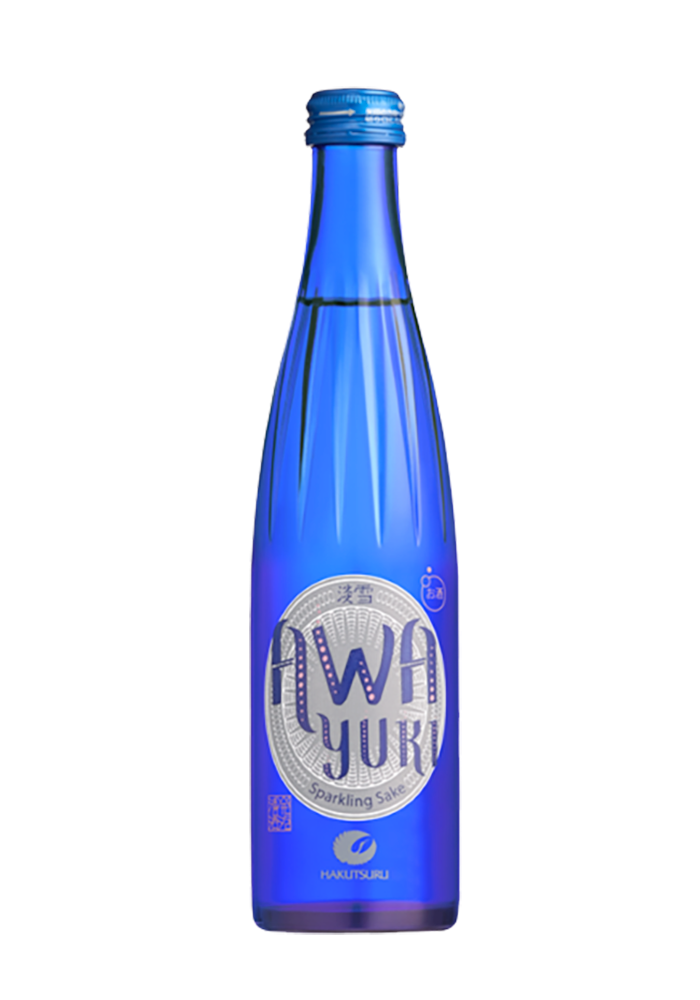
Sparkling pick: Hakutsuru Awa Yuki
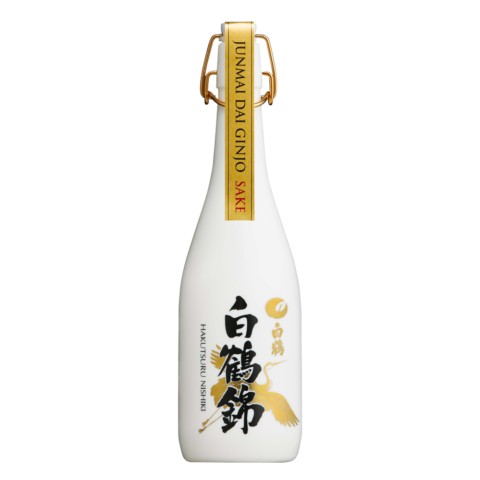
Gift-able pick: Hakutsuru Nishiki
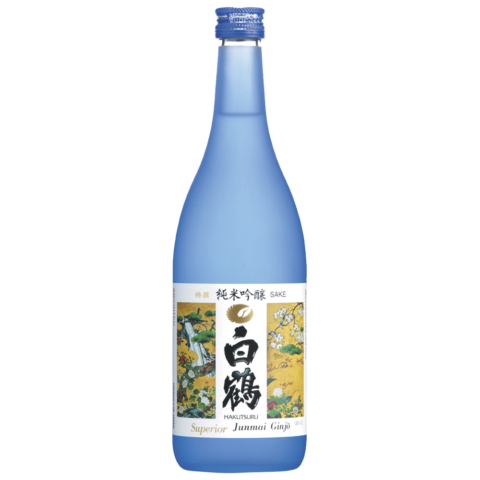
Junmai Ginjo pick: Hakutsuru Superior
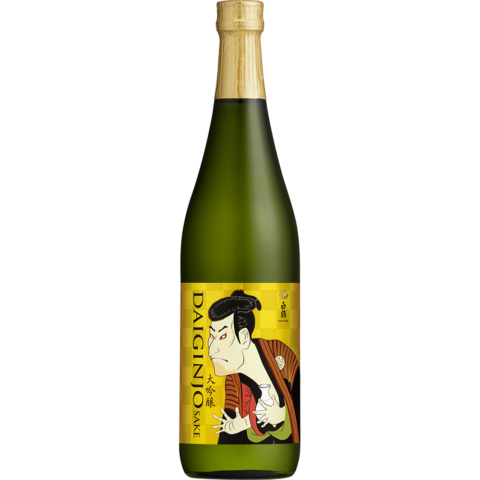
Daiginjo pick: Hakutsuru Ukiyo-E

Perfect for Cocktails pick: Hakutsuru Ukiyo-E Junmai
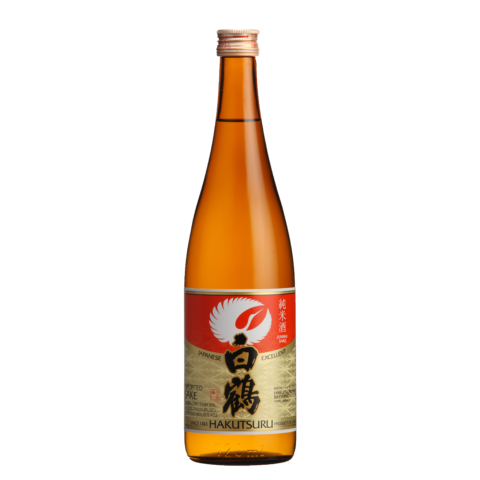
Our pick to drink Chilled or Warm: Hakutsuru Excellent Junmai
When it comes to holiday gifts, few things are as unique and impressive as a saké gift package. Saké is a traditional Japanese alcoholic beverage that is perfect for celebrating any special occasion. Whether you are looking for a gift for a friend, family member, or business associate, a saké gift package is sure to please.
SakéOne has three different saké gift packages, each available all at special prices. This way you can find one that fits your budget and the recipient’s taste.
First, let’s walk through our top three reasons why saké packages are the perfect gift for the holidays
1. Elegent
Our specially curated saké packages are a tasteful gift that will be cherished by anyone. The included premium sakés tastes as good as they look. The bottles are designed so beautifully that your special someone will be proud to display their saké in the home. Lastly, the art of making saké is an ancient one, the recipient will enjoy being a part of something special.
2. Creates a connection
Food brings people together and saké makes the experience evermore flavorful. Sharing saké and meals with friends and family is a great way to connect and dive deeper into the enjoyment of the moment.
3. Suitable for many people
Saké packages make memorable gifts to a wide range of audiences. These bundles are perfect for friends, co-workers, in-laws, and business partners. Do you have a person on your list that is hard to buy for? Try getting them a holiday saké package!
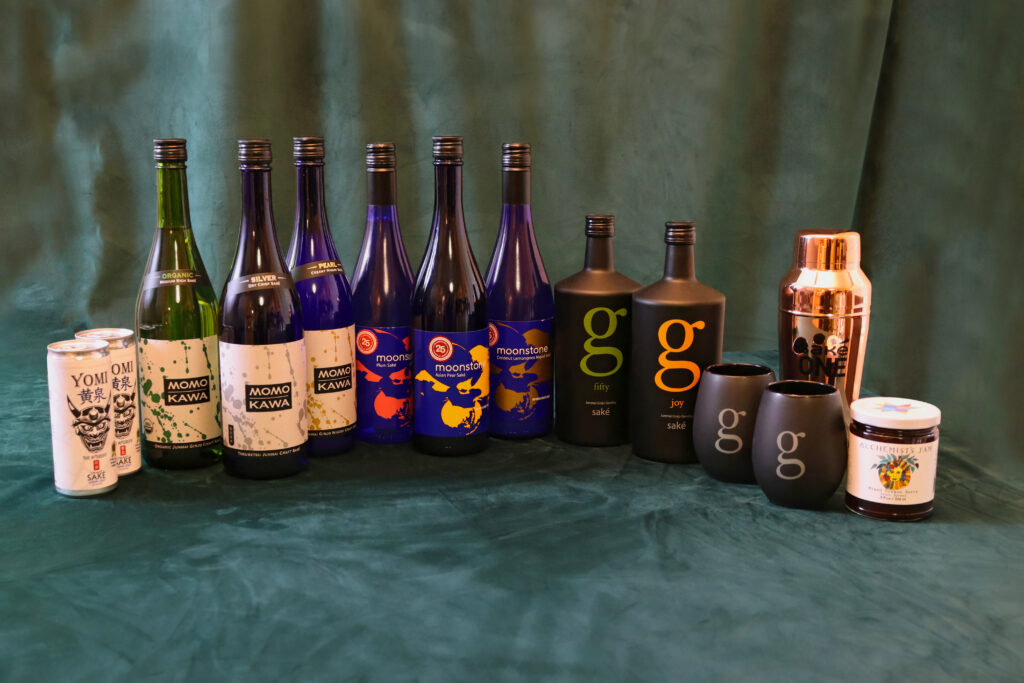
The Oregon Craft gift pack is the gift that keeps on giving! It’s perfect for someone who wants more than just saké. Not only does this set include an array of locally brewed sakés; the set includes local jam, a cocktail shaker, and two glasses. Gift this to the Momokawa fan or introduce a Japanese saké enthusiast in your life to American-made saké. We know they’ll love it!
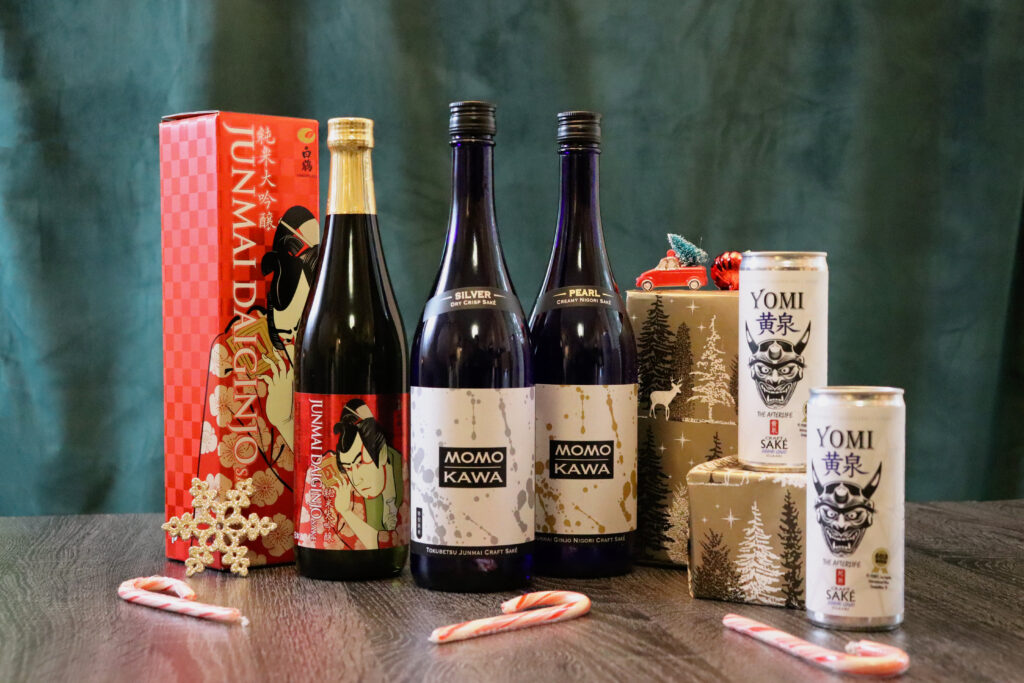
Looking to give the gift of saké but want it to be a little extra special? Our Merry & Bright gift set is the perfect option! Includes a variety of locally brewed saké and imported saké, this pack allows the recipient to explore many flavors and styles. We recommend this gift set for the saké enthusiast in your life. Alternatively, the array of flavors is suitable for folks who love to throw dinner parties. With your thoughtful gift, they’ll have many sakés to pair with a myriad of foods.

Find a gift pack that spreads joy to anyone in your life! The Snow Day bundle includes five import sakés, making it a great starter set for someone new to saké. At a price point of just, $49 this pack is a great stocking stuffer, hostess gift, or a “thank you” to your business partner.
Happy Holidays!
Sake is traditionally enjoyed as is. But recently, it is playing a key role in the cocktail scene. For bartenders and sake enthusiasts, sake is a versatile yet approachable ingredient able to play a main or supporting role in cocktails.
When drinking sake, you may taste flavors like tropical fruit or pepper and other spices. The flavors are derived from the beverage’s water source, rice polishing, and fermentation process. The variety of flavors within the category is vast and sake can bring out an umami quality, fruitiness, or creaminess that adds to the flavor profile of a cocktail. The unique flavor profile is just one reason why it is becoming part of the mixologist’s toolkit.
Now that you have a little background, let’s break down the reasons to love sake in cocktails.
Sake’s alcohol by volume (ABV) hovers at about 15% or 16%, while distilled spirits have an ABV of around 40%. When mixing sake into a cocktail instead of a distilled beverage, the cocktail will have a lower ABV. Many love low ABV cocktails because the effect is more mellow than spirit-forward drinks. Sake cocktails also interest those who don’t love the boozy flavor of some stronger drinks.
While sake can take a lead role in a cocktail, it also can round out the existing flavor when added to a spirit-forward cocktail. Unlike distilled spirits, sake can have notes of cherry, melon, or other fruits that come from the water source and the rice polishing process. These sweet or umami flavor profiles are key to the beverage’s performance in cocktails.
Looking to make your own sake cocktail? Consider using sake in place of a spirit with similar weight, such as gin, vodka and tequila. One of our favorite cocktail recipes is the Lemon Pom Saketini. This low ABV cocktail blends together simple syrup, pomegranate juice, and Momokawa Organic Junmai sake for a refreshing drink. In this recipe, the notes of melon and lime in the Junmai Ginjo are not overpowered and the delicate flavors are highlighted.
Nigori sake is a good choice when creating a sweet and creamy cocktail. In the Hazelnut Nigori Iced Coffee, Murai Family Nigori Genshu is combined with Cold Brew Coffee and Hazelnut Syrup to achieve a bold beverage with notes of vanilla and spice. Creamy Nigori also pairs well with lighter ingredients such as dry vermouth or gin. In the Nigori Negroni recipe, Nigori is mixed with bittersweet vermouth and Aperol for a well-balanced beverage with a subtle umami flavor.
Sake can easily be overpowered by other flavors in a cocktail. It is best to be mindful of balance so that the beverage can maintain its delicate flavor profile. A tip is to avoid adding to cocktails with a lot of distilled alcohol and competing flavors. Instead, keep it simple to let it shine. Ultimately, sake is a versatile beverage that is enjoyable on its own and works wonders on cocktails by adding complexity and delicate notes to the flavor profile.
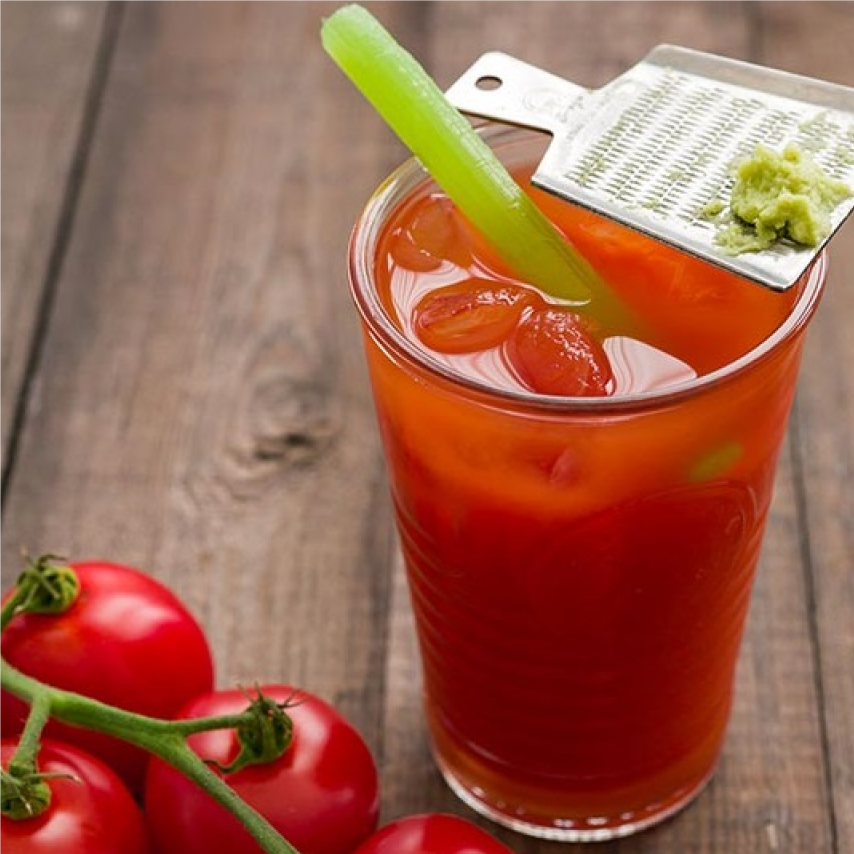
Mixer for 4 Cocktails
Ingredients for 1 Cocktail
Directions
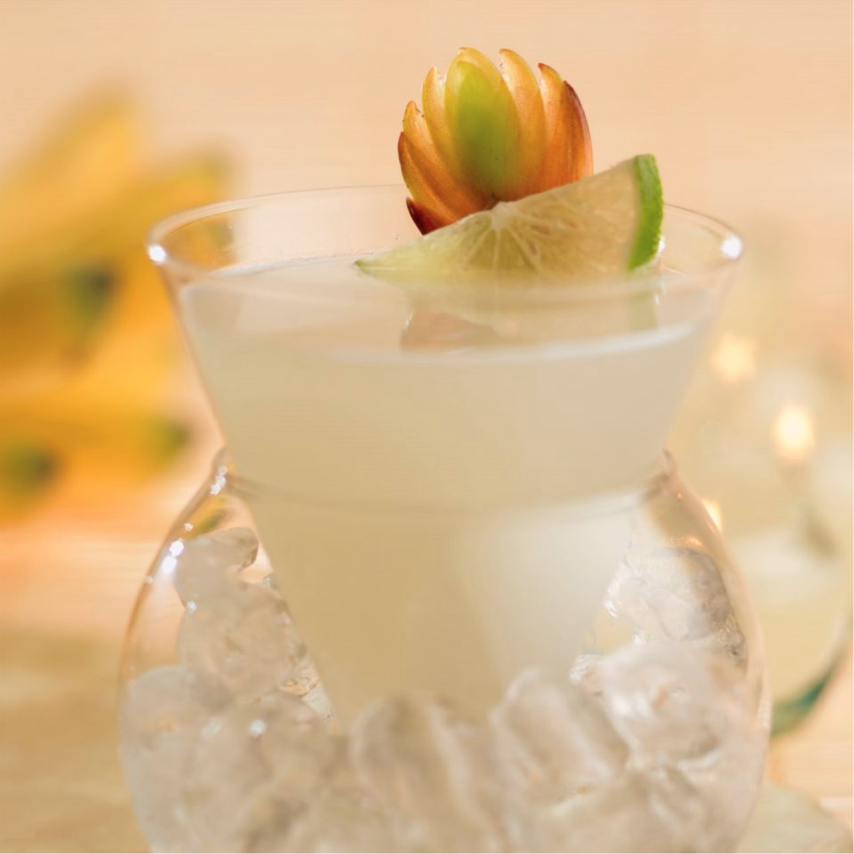
Ingredients
Directions
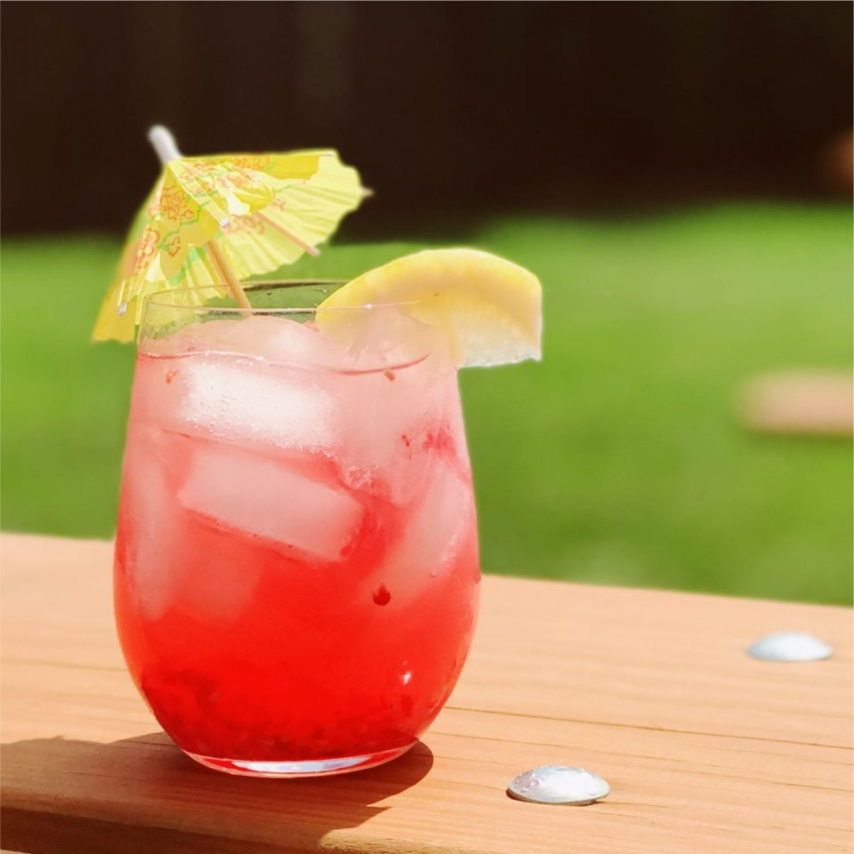
Ingredients
Directions

Ingredients
Directions
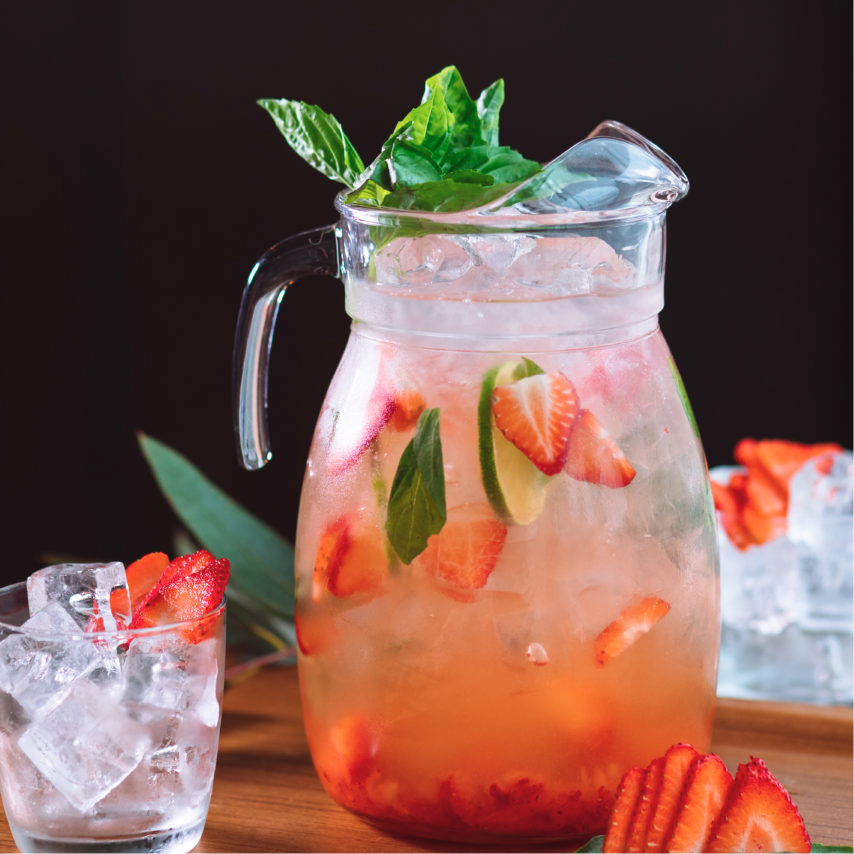
Ingredients
Directions
The first sake I tried was at a Japanese restaurant in Philadelphia. It was hot, served in a masu cup, and paired with sushi. It wasn’t until moving to Portland and exploring the Oregon and Japanese sake scenes that I grasped the variety within the sake category, beyond its misconceptions as a Japanese wine. Today, I drink sake chilled and consider it one of the most versatile beverages to pair with food. Even with pizza!
While it may seem intimidating to decode a sake list, you don’t want to miss out on the vast number of flavor profiles and pairings. When looking at a sake menu, you’ll notice the names are broken down into categories like Junmai, Ginjo, Daiginjo, Honjozo, and Futsu. Similar to the varieties on a wine list, each word means something different, indicating how the sake is made and how it will taste. Now that you have some background, let’s take a look at the different styles of sake.
Junmai sake is made from just rice, water, koji, and yeast. There is no brewer’s alcohol added in the process because to qualify as Junmai the sake must be “pure”. Typically, the rice in Junmai sake is polished to at least 70% of its original size. While the Junmai classification is broad, its flavor profile often offers savory notes and a full body.
Our recommendation: SakéMoto
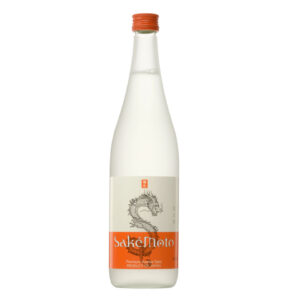
Junmai Ginjo is a specialty at SakéOne and many of our products are made in this style. This premium sake is made with rice, of which 40% is milled, while 60% retain their original size. To meet the requirements of a Junmai Ginjo, the brewer does not add in distilled alcohol.
Our recommendation: Momokawa Diamond
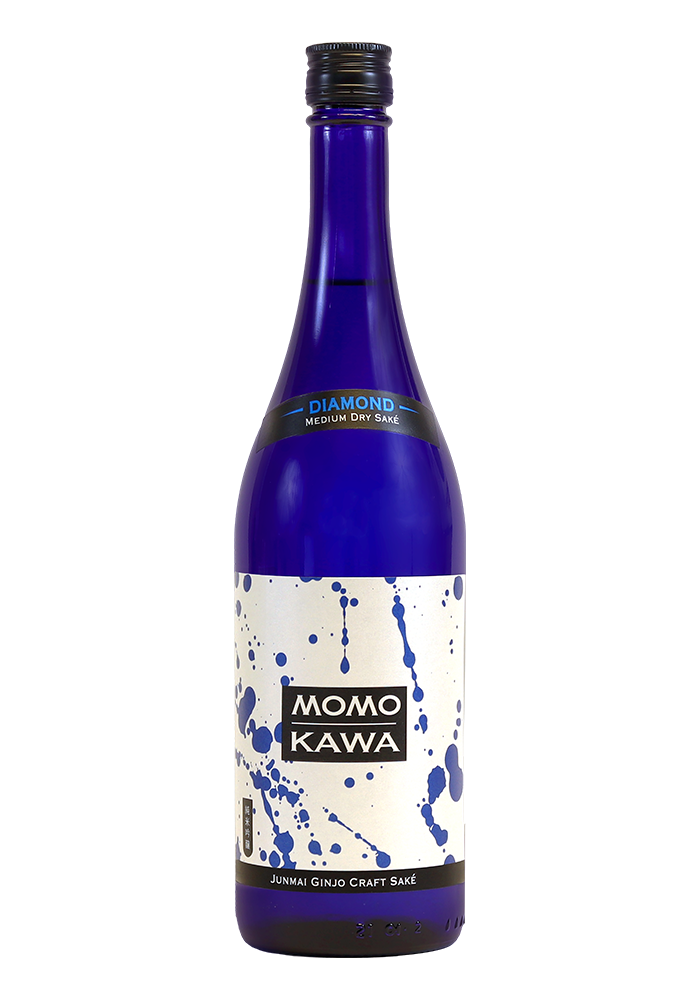
Ginjo sake meets the same rice polishing requirements as Junmai Ginjo. During the sake brewing process, brewers add distilled alcohol to achieve different flavor profiles, unlike Junmai Ginjo.
Our recommendation: Yoshinogawa Gokujo
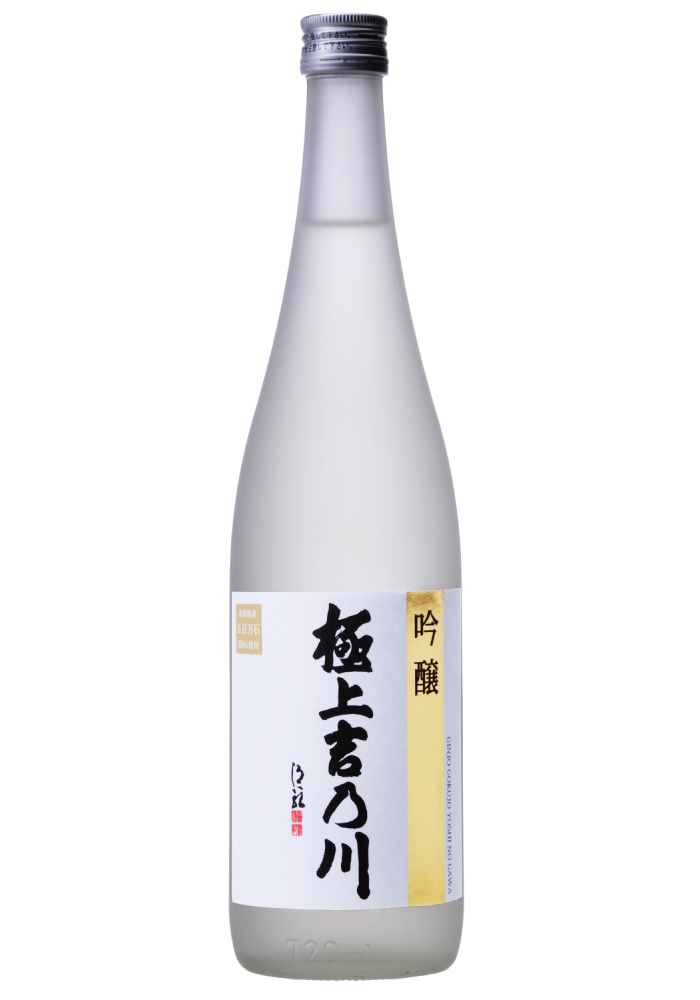
Junmai Daiginjo is an ultra-premium sake brewed with rice milled down to 50% of the original size.
Our recommendation: Hakutsuru Ukiyo-E

Daiginjo follows the same process as Junmai Daiginjo except for the small amount of distilled brewer’s alcohol that is added to the sake after fermentation.
Our recommendation: Yoshinogawa Golden Gourd
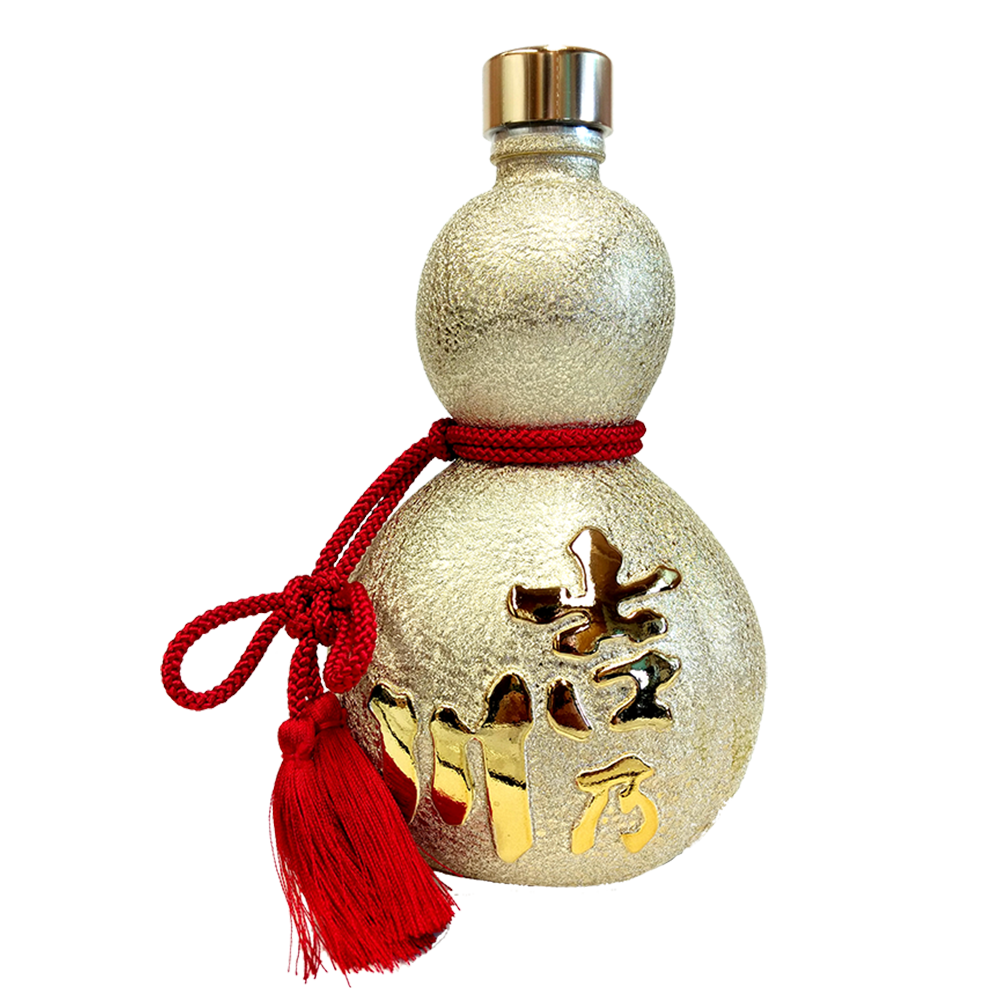
Honjozo is similar to Junmai because the rice is polished to at least 70% of the original size. To qualify as Honjozo, a small amount of distilled alcohol is added to the sake.
Our recommendation: Murai Family Tokubetsu Honjozo

Futsu sake, known as table sake, is not restricted on polish ratio. Also, the brewer has the freedom to choose whether distilled alcohol is added after fermentation.
Our recommendation: Yoshinogawa Shinmai Shikomi Shinshu

Nigori is a cloudy sake that is coarsely filtered to allow flavorful and aromatic sediments to remain in the beverage. This style is often sweet, soft, and silky.
Our recommendation: Hakutsuru Sayuri Nigori
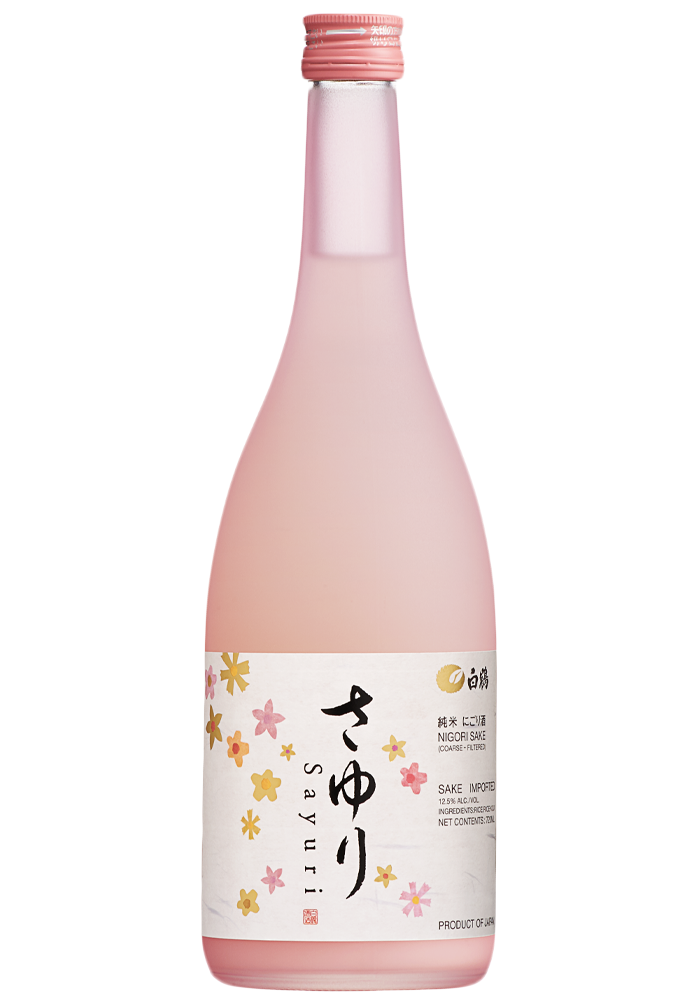
A different take on a “bubbly” favorite. The bubbles in sparkling sake are formed by trapping CO2 produced from a second yeast fermentation, or by injecting CO2. We love using sparkling sake to make mimosas!
Our recommendation: Hakutsuru Awa Yuki

Tokubetsu is a term used to designate a “special sake”. Often the rice is milled more than the standard. The Momokawa Silver sake is classified as a Tokubetsu because of its unique dry and crisp mouthfeel.
Our recommendation: Momokawa Silver
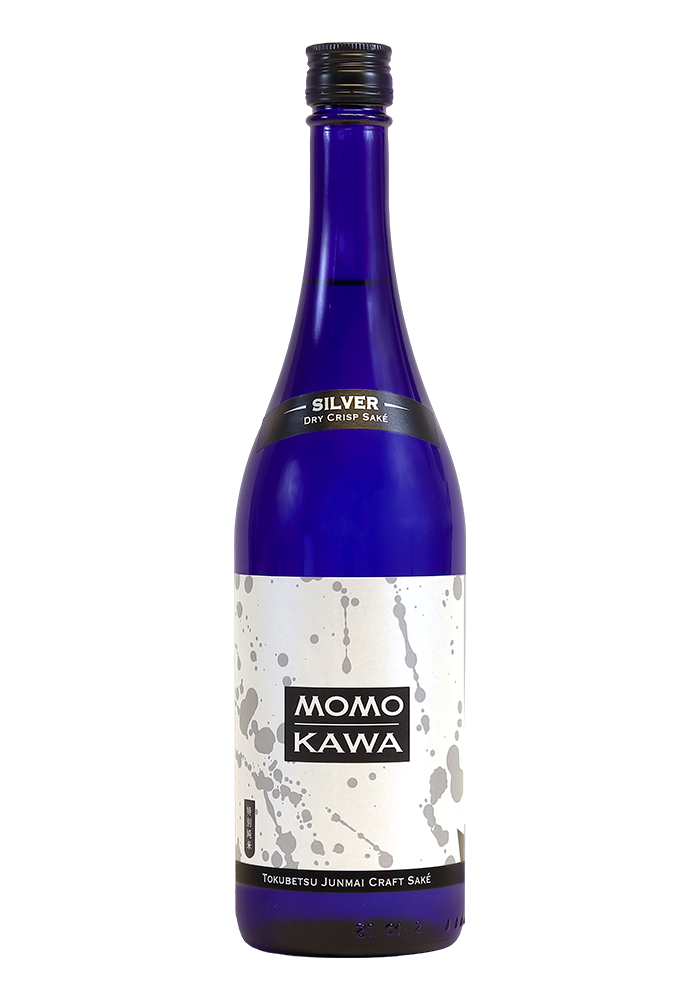
Genshu sake is often diluted with water to achieve the desired flavor profile, but Genshu is sake that is bottled without dilution.
Our recommendation: g Joy Genshu

A different process in the development of the sake when the rice is smashed with a pole to create a high level of natural lactic acid.
Our recommendation: Kasumi Tsuru Kimoto Extra Dry
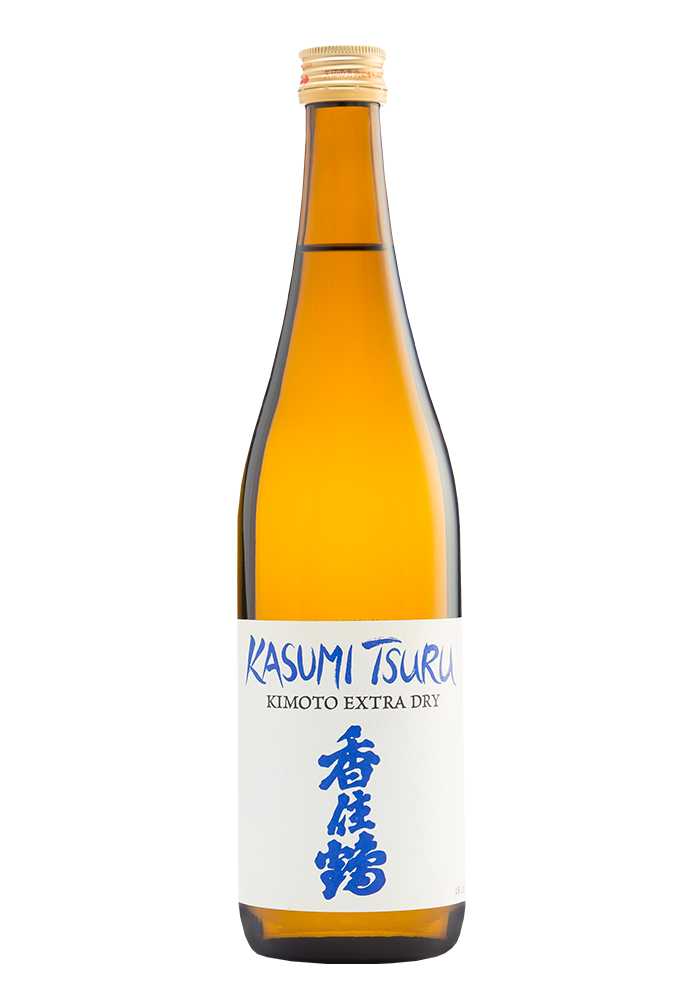
A traditional sake similar to the Kimoto sake, but without the use of poles to smash the rice.
Our recommendation: Kasumi Tsuru Yamahai

An American twist on authentic sake where flavors are added to the beverage. Delicately sweet and fruity, infused sake is delicious on its own and mixes well in cocktails.
Our recommendation: Moonstone Asian Pear
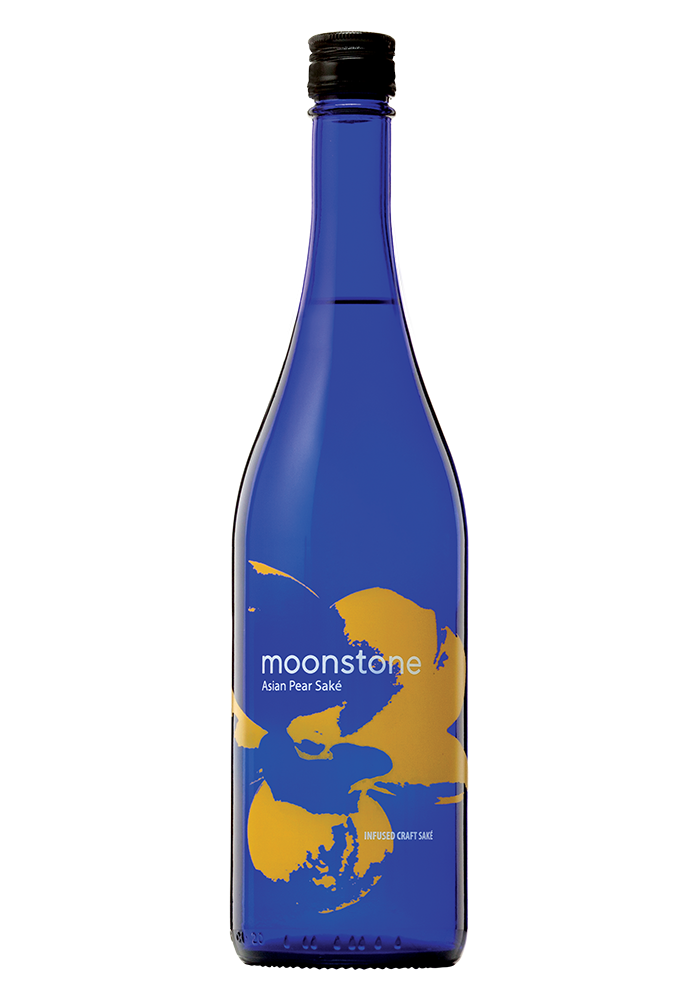
While understanding basic terminology is helpful, it’s easy to get lost in the classifications before the glass touches your lips. Start with a Ginjo or Junmai Ginjo if you’re an enthusiastic beginner. Ginjo and Junmai Ginjo have a fruity and floral aroma and are perfect for enjoying in a glass or in a sake cocktail.
Kanpai!
Saké is a traditional Japanese alcoholic beverage made from rice. It is a versatile drink that can be enjoyed in many ways, from warm to chilled, and pairs well with a variety of dishes. However, there are many myths and misconceptions surrounding saké that have been perpetuated over the years. In this blog post, we will explore some of the most common saké myths and set the record straight.
One of the most common misconceptions about saké is that it is always served hot. While it is true that some types of saké are traditionally served warm, not all saké is meant to be consumed this way. In fact, many high-quality sakés are best enjoyed chilled to bring out delicate notes in their flavor profiles. The temperature at which saké is served depends on the individual bottle and the preference of the drinker.
While it is undeniably enjoyable to pair saké with sushi, the idea that saké can only be consumed with this traditional Japanese dish is a misconception. Saké can be paired with a wide range of cuisines, including grilled meats, salads, cheeses, and desserts. Its diverse flavor profile allows the beverage to complement and enhance many meals, making saké a great choice for a culinary adventure.
The notion that saké is exclusively consumed in small cups, known as “ochoko“, is another misconception. While it is true that these small cups are often used to serve saké, there are many different types of vessels that can be used to enjoy saké. For example, many people prefer to drink saké from wine glasses to fully appreciate the flavor and aroma.
Another myth surrounding saké is that it is similar to distilled spirits like vodka or whiskey. However, this is not true. Saké is actually brewed, much like beer. The process of making saké involves several steps. First, rice is polished to remove the outer layer, leaving behind the starchy core. Then, the rice is washed and soaked in water. After that, it is steamed and cooled down. Now the koji, a certain type of mold, is added to the steamed rice. This koji mold breaks down the starches in the rice and turns them into fermentable sugars. The koji creates a starch coating around the rice kernel, which is essential for the yeast to eat during fermentation. Finally, yeast is added to the mixture, and it undergoes fermentation. So, while rice on its own cannot ferment, the koji mold plays a crucial role in converting the starches in the rice into sugar, which the yeast can then consume to produce alcohol. This all results in creating the brewed beverage we enjoy.
Many people believe that saké is always clear. However, this is not true. Saké can be either clear or cloudy, depending on the brewing process. Cloudy saké, known as Nigori style saké, is unfiltered and often has a richness and slightly sweet taste.
While Japan is known for producing delicious saké, it is not the only country that produces this traditional beverage. Due to its rising global popularity, saké is now being produced in various countries, including the United States where the SakéOne brewery is located.
In conclusion, saké is a versatile beverage that has been shrouded in myths and misconceptions for too long. By debunking these common myths, we hope to encourage more people to explore the world of saké and discover many ways it can be enjoyed. So the next time you pour yourself a glass, remember that there’s more to saké than meets the eye.
The unique and flavorful nature of saké has made it a popular drink around the world. For a beginner, it can be confusing to know how to serve and drink it properly. There are three common ways to serve saké: using a traditional masu cup; using a saké set, made up of a tokkuri and ochoko; drinking it in a wine glass.

The traditional way to serve saké is in a masu cup. This is a wooden cup occasionally lined with lacquer and is usually square in shape. Its design is meant to draw out the flavor of the saké and to maximize the drinker’s enjoyment. When using a masu cup, it is important to fill it only halfway and not to the brim.
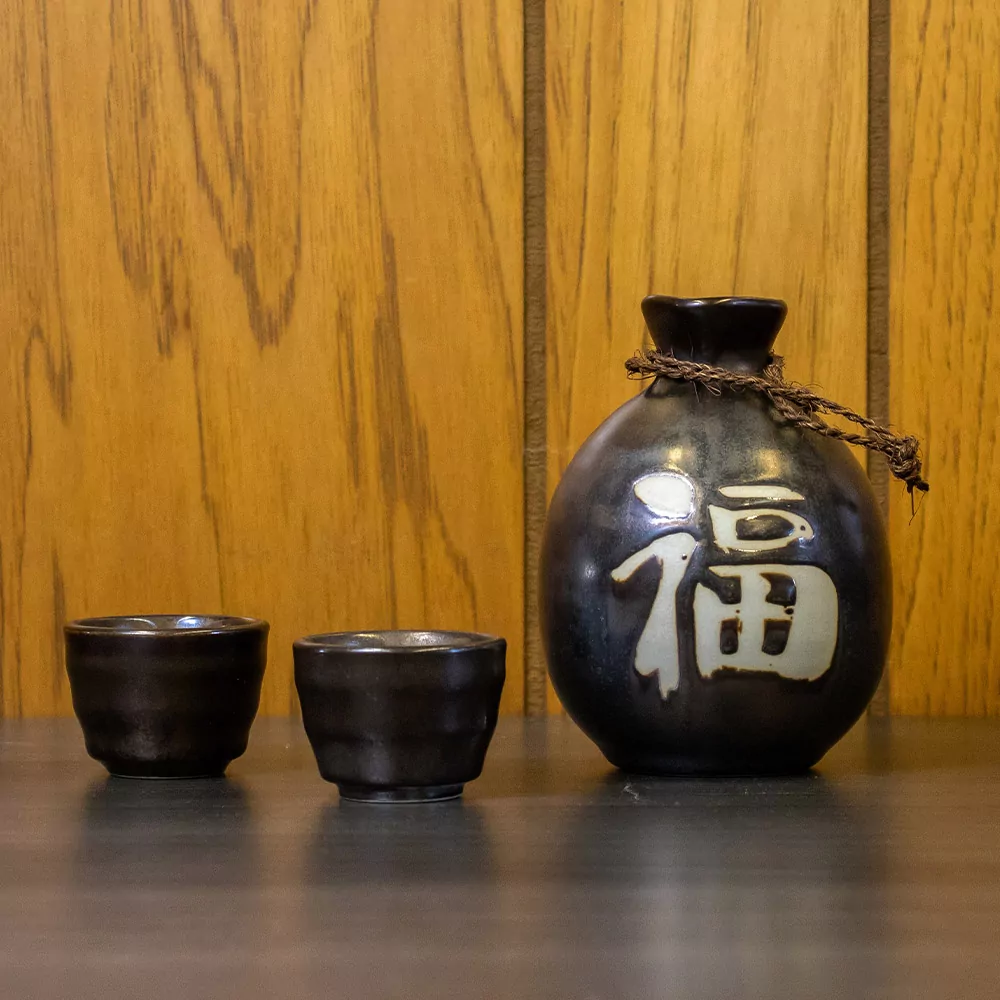
The second way to drink saké is by using a saké set. This set is made up of two pieces: the tokkuri and the ochoko. The tokkuri is a saké flask, usually made of ceramic, and it is used to hold the saké. The ochoko is a small cup, also made of ceramic, and it is used to drink the saké. It is important to note that when using a tokkuri and ochoko, the saké should be poured from the flask into the cup.
Saké is often thought to only be paired with sushi, but there are so many incredible pairings that will make your drinking experience unique. From spicy food to umami dishes, to desserts and salads, there are many different types of saké that will bring out the flavors of each dish.
Here are five saké pairings that will change how you drink saké.
Spicy dishes and saké can be a match made in heaven. An earthy and dry Junmai style saké is a great match for spicy food because the flavors of the saké will accentuate the heat in the dish.
The creamy Nigori style saké is also a great pairing because the creaminess of the saké will make a lovely contrast to the dish’s spice.
Our Recommendations

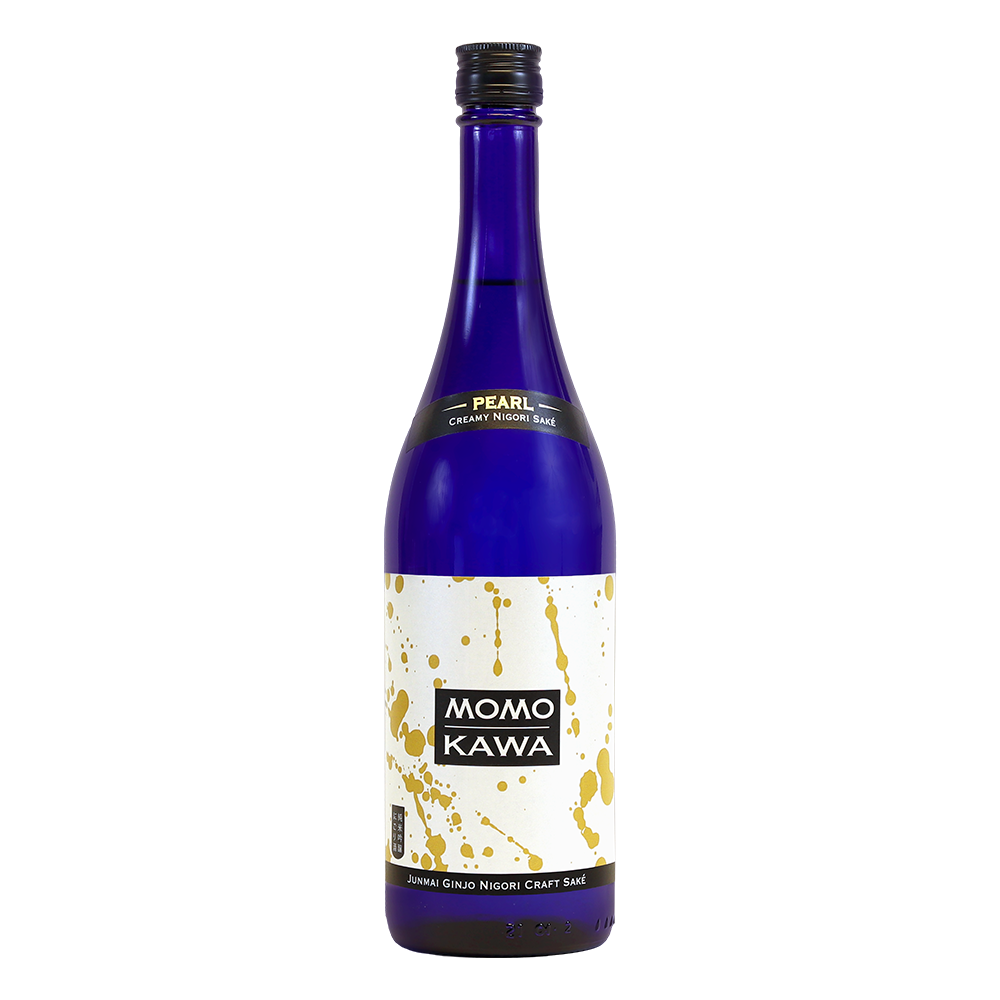
Umami food and saké are also great pairings. Umami is often described as a savory flavor and the Junmai style saké is characterized by a rich aroma and strong flavor of the rice. A pairing of umami rich Junmai, compliments dishes with a similar flavor profile.
Our Recommendations

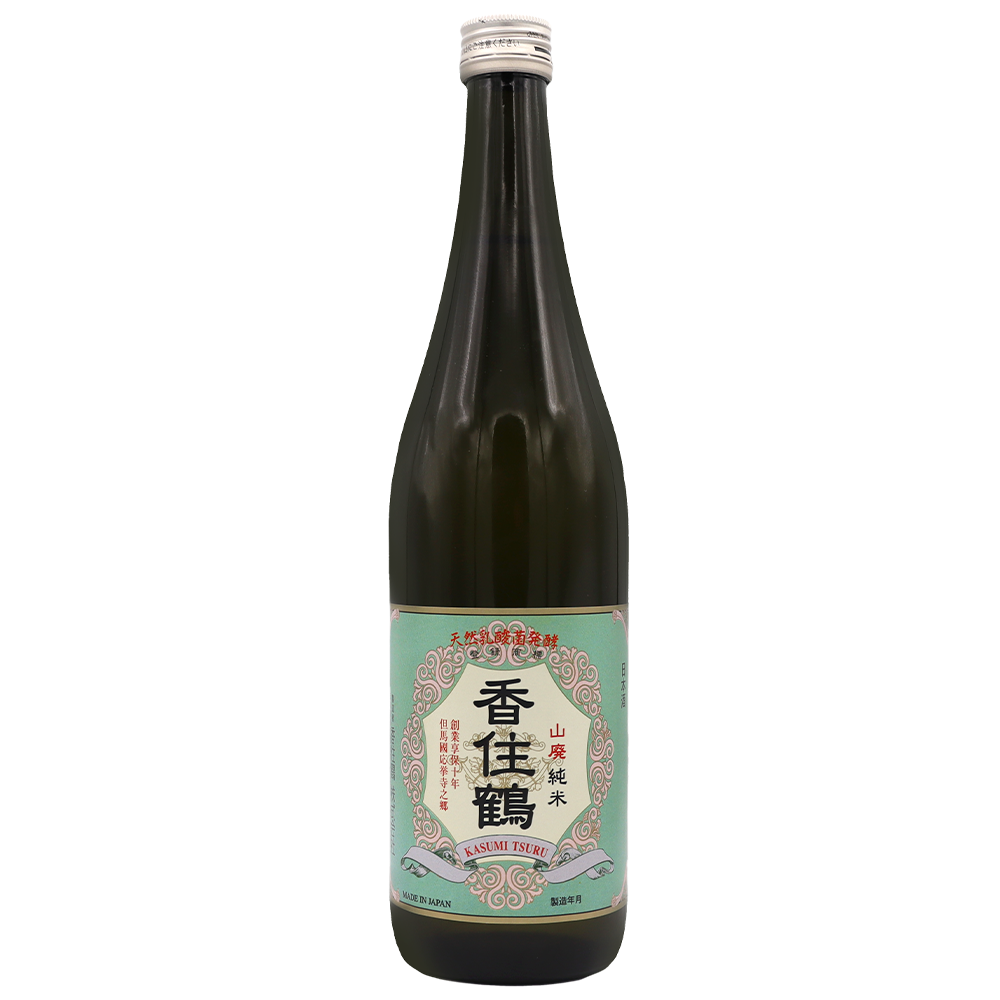
Desserts and saké are a delightful pairing. The creamy sweetness of the Nigori style is a perfect match for the sweetness of a yummy treat.
Sparkling saké is also a great choice because it often has a sweet flavor that will pair well with your dessert.
Our Recommendations
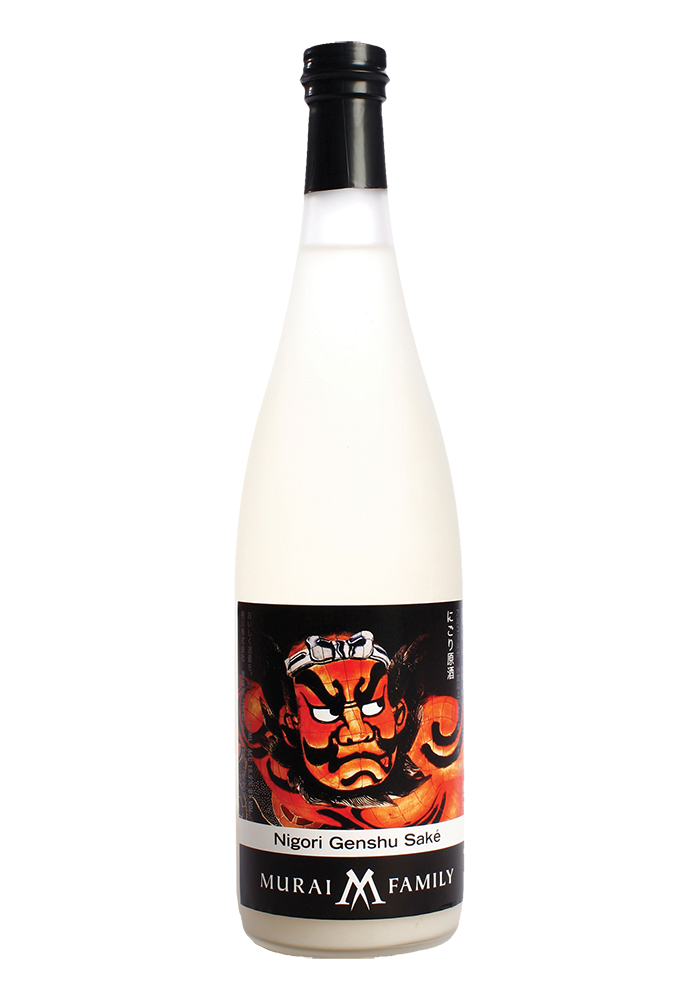


Meat and American favorites are scrumptious when paired with saké. Junmai or Genshu saké will help to bring out the flavors of the meat or American dish. The acidity of saké can also help to cut through the grease, making the dish more enjoyable.
Our Recommendations

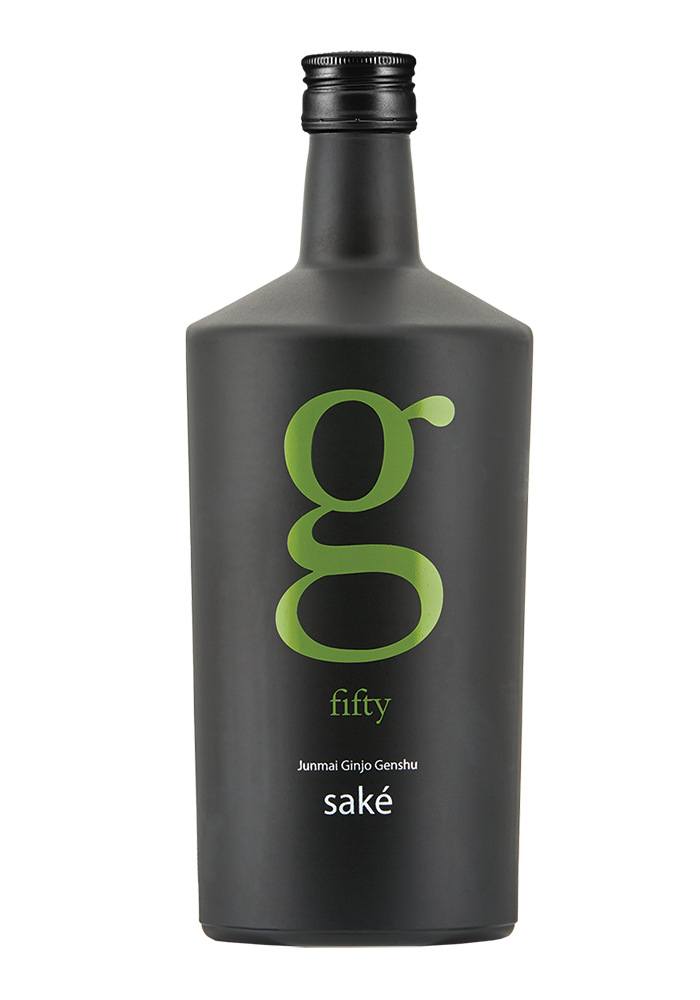
Saké and salads are a refreshing pairing. The Junmai Ginjo style saké is a great choice because of its fruity aroma. This will add a complex flavor to the salad and the Junmai Ginjo style saké pairs very well with light dishes.
Our Recommendations


From spicy food to umami dishes, there are many different types of saké that will bring out the flavors of each dish. Saké has many unexpected pairings that will make your drinking experience unique and special. Give these five saké pairings a try and experience the flavors that saké has to offer.